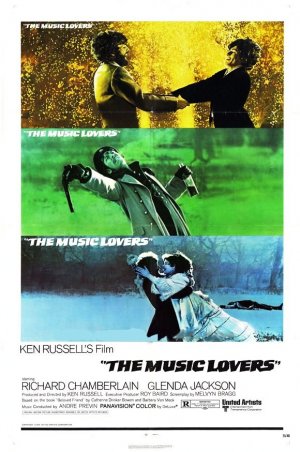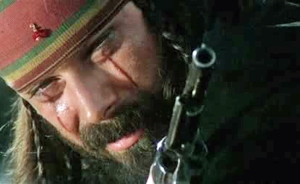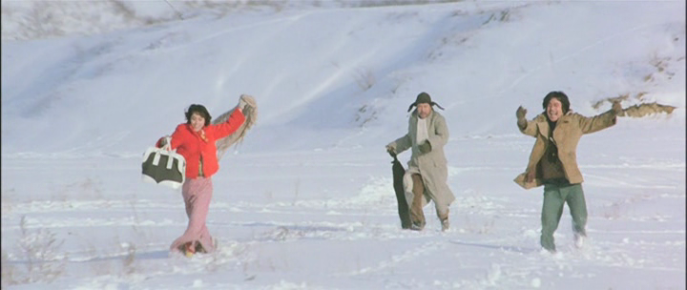Common sense would dictate that if it were the intention of Roy Baird, the producer of The Music Lovers, to make a concise reconstruction of the life of legendary Russian composer, Peter Ilyich Tchaikovsky, he should’ve considered someone other than Ken Russell to direct the film. Being that Baird had produced Russell’s previous film, 1969’s Women In Love, a dazzling adaptation of the D.H. Lawrence novel, as well as Lindsay Anderson’s groundbreaking surrealistic film about youth rebellion, If…, I would think that he knew exactly what he was getting into, as should’ve anyone else who had seen Russell’s previous work, and therefore all should have expected that the film was going to be the flamboyant director selecting what he needed from the composer’s life to emphasize his central thesis, rather than the construction of a long biopic with painstaking (read: tedious) detail to Tchaikovsky’s life story. So I ask, why were critics surprised and disappointed in 1970 with The Music Lovers?
Then a young critic for The Chicago Sun Times, Roger Ebert upon seeing the film during its original release wrote, “Tchaikovsky may not have been dealt with in the fairest possible manner,” adding that, “The Music Lovers is totally irresponsible, then, as a film about, or inspired by, or parallel to, or bearing a vague resemblance to, Tchaikovsky, his life and times.” I, for one, have always taken the line “based on a true story” very seriously, and if you have read my review of the 1976 horror film that was “based on a true story,” The Town That Dread Sundown, you would know that I came down rather hard on their use of the facts associated with the very real murders that occurred in Texarana, Arkansas in the 1940s, but with The Music Lovers, I feel that the facts were augmented for a greater purpose than just simply sensationalism. I truly feel that there is one necessary fact of the film that Russell wants to make abundantly clear: Tchaikovsky was indeed a homosexual who would’ve done anything, selfish or not, to disguise that fact during a time when his sexual preference would have cost him the one thing that he truly loved, his music.
The Music Lovers screened with Freud, John Huston’s superb, but equally unorthodox, biopic on the father of psychoanalysis, at The Egyptian Theater on May 7th as part of a double feature tribute to the late London-born cinematographer, Douglas Slocombe, who passed away at the age of 103 on February 22 of this year. The Music Lovers was Slocombe’s only effort with Russell, and the visuals, as they would be in many of the pair’s individually subsequent films, are truly stunning as are the performances of Richard Chamberlain as Tchaikovsky and Glenda Jackson as Antonina Milyukova, the mentally ill woman who suffered from nymphomania and who the composer married to cover up his true sexuality, and through his disdain of her, Tchaikovsky helped to end her life in an insane asylum. Here, Russell augments the timeline as to when her institutionalization occurs as compared to his demise to add drama to the story. Also, the character of Count Anton Chiluvsky (Christopher Gable) never actually existed but serves as a composite of Tchaikovsky’s lovers over the years. The one pure fabrication in the film is that Tchaikovsky’s benefactor, Madame Nadedja von Meck (Izabella Telezynska), took away her beloved composer’s money upon hearing that he was a homosexual. So, now that we are armed with the knowledge of the fact changing (and unflattering) choices that Russell made in telling Tchaikovsky’s life story, does it reduce the impact of the film’s central message and make it a less successful film? For me, it now comes down to whether or not Russell put his style over substance.
Russell has always possessed this uncanny ability of presenting the most human affecting moments while creating a narrative that is frenetic to distraction at times. I don’t feel that The Music Lovers consistently achieves these moments in the same confident way that Russell would in his next film, The Devils. For example, I think of the quiet pastoral moments when Father Urbain Grandier marries his true love to exemplify his pure faith in the face of the aristocracy of the Catholic Church in between the grotesque exorcisms of the nunnery that give balance to the film, and this level of peace in chaos does not exist in The Music Lovers. The many scenes in The Music Lovers that are actually related to musical performance (yes, Russell does mention his compositions a few times more than critics would lead you to believe) are whimsical but ultimately purposeful in seeing into the composer’s thought process, which given the masquerade Peter was forced to live, are a tad ghastly (the 1812 Overture montage does have a lot of decapitation through cannon fires, which strikes me as about right). Though not given the same level of space in the madness as Oliver Reed’s performance as Father Urbain Grandier in The Devils, the moments of genuine pain, illness and sadness that are experienced by Antonina Milyukova through Glenda Jackson’s bravura performance are not lost in the frenzy of music, ribbons, and cholera nightmares of The Music Lovers. Remember that the title of this film is The Music Lovers and not Tchaikovsky (although the title was actually changed from Tchaikovsky as to not complete with a Russian film released a year earlier with that title). I feel that Russell’s final intentions to show that the real victim of the composer’s decision to conceal his sexuality was less the composer himself but more of the woman he duped into marrying him. Russell concludes that Tchaikovsky’s agonizing death from cholera was a self-inflicted wound brought from drinking diseased water, but Antonina Milyukova’s death in the snake pit was due to believing in a man whom she genuinely admired who put his selfish needs above her no matter what the cost.
Original 1970 Trailer For The Music Lovers
So, was Russell’s decision “unfair” as Ebert suggested? The facts do bear out that the real Peter Ilyich Tchaikovsky destroyed another person so that he could continue doing what he loved, and although the film takes a heavy hand at times to drive this truth home, it is ultimately successful by painting a portrait of a man who was not only a great composer but also a man who was beneath contempt in his personal life. The Music Lovers is also the story of another very flawed person, Antonina Milyukova, who was led to believe that the person whom she admired for his music was as majestic as a human being as he was a creator. This isn’t a mindless musical biopic to get you humming tunes when leaving the theater, like Milos Forman’s Academy Award winning 1984 slop, Amadeus; The Music Lovers is a flawed but beautifully realized tragedy that is less about music and more about the evils of maintaining a false identity in the face of fame.





















